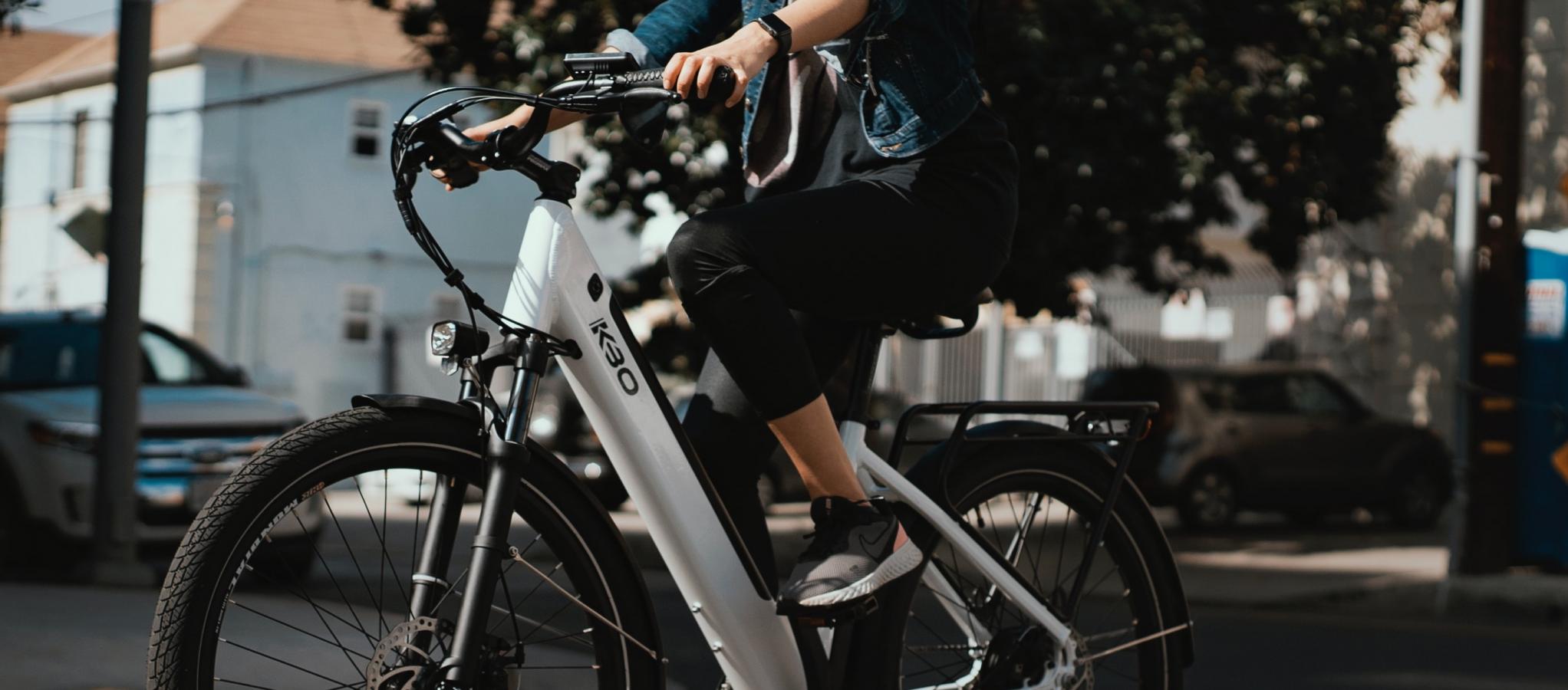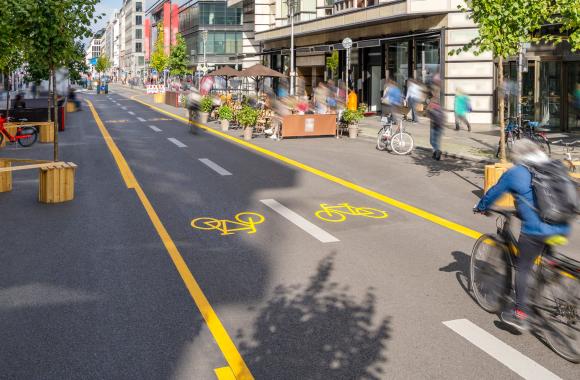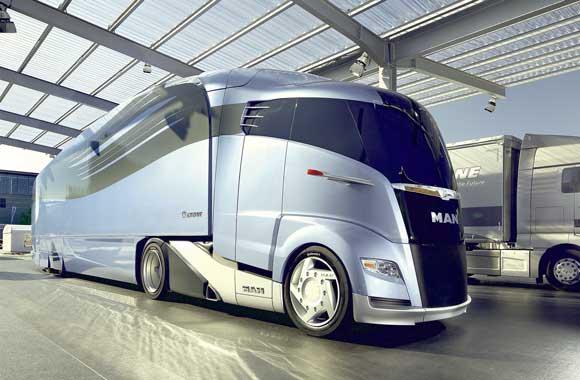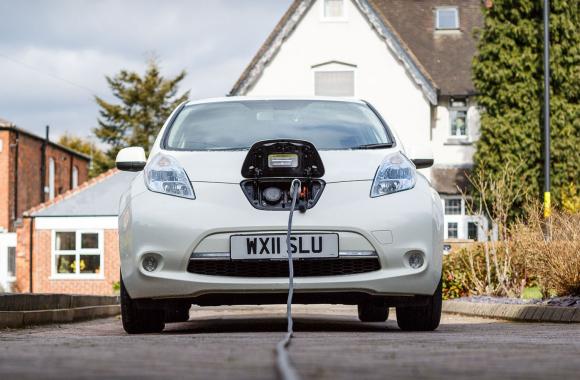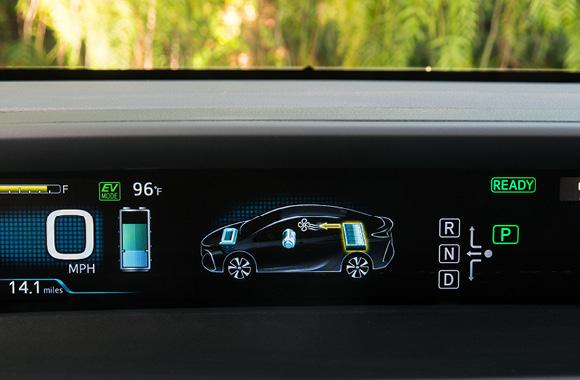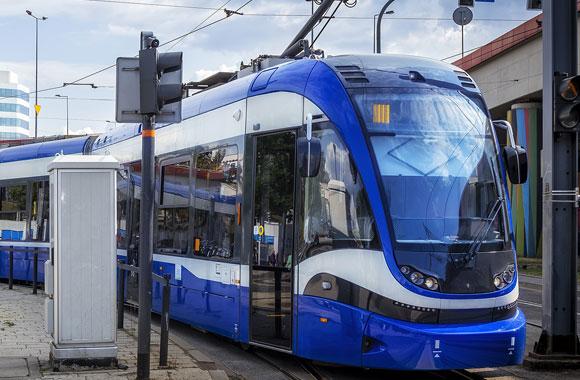Electric Bicycles
Battery-powered motors can boost the use of bicycles, reducing greenhouse gas emissions from cars.
Reduced/Sequestered
2020–2050
To Implement
Operational Savings
Impact
In 2018, electric-bicycle (e-bike) riders traveled around 289 billion kilometers, largely in China. Based on market research, we project use could increase to 1.44–1.66 trillion kilometers per year by 2050. The growth will occur in Latin America, the Middle East, and Africa. This solution could reduce carbon dioxide equivalent emissions by 1.39–1.55 gigatons and save e-bike owners US$402.06–446.01 billion in first costs and US$1.07–1.23 trillion in lifetime operating costs.
Introduction
Project Drawdown’s Electric Bicycles solution focuses on use of bicycles that are at least partly powered by rechargeable batteries. It replaces all cars, public transit, conventional bicycles, two-wheelers, and walking.
Electric bicycles (e-bikes) are the most environmentally sound means of motorized transport in the world today. They offer many of the same benefits as traditional bicycles, especially ease and versatility of mobility for urban commuters, but e-bikes have benefits that conventional bicycles do not. An attached motor and battery make it possible to traverse steep hills or cover long distances with little effort, expanding use to individuals who might not otherwise choose active, low-carbon transportation. These benefits, however, are not free. E-bikes have higher emissions than a regular bicycle or simply walking. They can cost more than conventional bicycles, and they create an end-of-life challenge for expired batteries. E-bike battery manufacturing and charging also lead to higher carbon dioxide emissions than traditional bicycle manufacturing.
This report examines the net environmental and financial impacts of increased e-bike use around the world from 2020 to 2050. We compare e-bikes with other mobility options because research has indicated that many e-bike users would have used other modes instead, including light-duty vehicles, mass transit, regular bicycles, and motorized two-wheeled vehicles such as scooters.
Methodology
Total Addressable Market
The total addressable market for e-bikes is the total urban transport demand projected to 2050. We established this from baseline projections of the International Energy Agency (IEA) and the International Council on Clean Transportation (ICCT). The Institute for Transportation and Development Policy and the University of California, Davis (ITDP/UCD) provided adoption estimates. Most global adoption has been in China, but growth is expected globally. We estimate total current adoption (defined as the functional demand in 2018) to be just under 1 percent of the total market.
Adoption Scenarios
We calculated the impacts of increased adoption of e-bikes from 2020 to 2050 by comparing two growth scenarios with a reference scenario in which the market share was fixed at current levels.
- Scenario 1: E-bike use continues to grow without any major interventions to 1.44 trillion passenger-kilometers (3 percent of total urban travel).
- Scenario 2: E-bike use grows as a percent of total bicycle use, which is also increasing, and reaches 1.66 trillion passenger kilometers (3 percent of total urban travel).
Emissions Model
We estimated emissions based on grid and fuel energy usage, as well as indirect emissions from production, and applied global grid emissions factors for e-bike electricity emissions. We used a combination of modes of transport as the conventional alternative. Some of these modes use electricity, while most use fuel. After weighting the energy usage, we calculated grid and fuel emissions for each alternative.
Financial Model
All monetary values are presented in 2014 US$.
Installation costs came from a wide range of sources. E-bike data suggest that the battery is the major component of costs, and battery size varies. We set the price of e-bikes at US$491,576 per megawatt-hour of installed battery capacity, the average of 23 data points. The first cost to implement the solution is defined as dollars per installed megawatt-hour of battery. It is based on the purchase price of e-bikes, weighted by battery type and region. The calculations are based on the assumptions that one megawatt-hour of installed battery pack provides batteries for around 2,200 e-bikes (each with a 458 watt-hour pack) and each e-bike runs a fixed average number of passenger-kilometers per year, so 1 megawatt-hour of battery pack allows for just over 6 million passenger-kilometers per year. The battery size and average passenger-kilometers per year both change over time.
Conventional operating and maintenance costs (expressed in 2014 US$ per passenger-kilometer) include fuel costs and are regionalized and weighted by mode share. We used a bottom-up approach by aggregating regional data due to the differences in mode share and costs across regions. Internal combustion cars carry the additional fixed expense of insurance. Solution operating and maintenance costs assume that e-bikes have no maintenance costs beyond electricity costs.
Integration
We prioritized the urban Project Drawdown solutions by energy and space efficiency, so nonmotorized solutions like Walkable Cities and Bicycle Infrastructure were highest, followed by e-bikes and other partially motorized solutions. Since e-bikes are a high priority, we applied full adoption for each e-bike scenario and reduced adoption of some lower-priority solutions to ensure that total passenger-kilometers did not exceed the total predicted by sources like the IEA and ICCT. Variables shared across this and other solutions had the same inputs.
Results
Under Scenario 1, e-bikes could prevent the release of 1.39 gigatons of carbon dioxide equivalent greenhouse gases and save consumers US$1.07 trillion in lifetime net operating costs over 2020–2050. The first costs to implement are US$402.06 billion lower than those of cars, even when battery replacements costs are included.
Scenario 2 avoids 1.55 gigatons of emissions, saves $1.23 trillion in lifetime net operating costs, and costs $446.01 billion less to implement than cars.
Discussion
Shifting passengers to lower-emission transportation modes is a huge step toward achieving drawdown. The Electric Bicycles solution is an important part of this shift. The transportation sector was responsible for an estimated 9.5 gigatons of carbon dioxide equivalent emissions in 2018 (IEA, 2018). Our Scenario 1 shows that using e-bikes in place of the composite conventional mode can reduce carbon dioxide equivalent emissions by 0.07 gigatons per year on average for 2020–2050, with a cumulative reduction of 1.14 gigatons of carbon dioxide equivalent emissions for that period. In more aggressive scenarios, bicycling increasingly replaces car trips, and the portion of bicycle trips made by e-bikes increases.
The global pandemic that began in 2020 saw a shift toward bicycling and particularly e-bikes for recreation and for replacing trips that would have been done using public transit. E-bikes and bicycles sold out in many places around the world, and several governments began offering incentives to replace old cars with e-bikes. Temporary bicycle lanes popped up all over the world. Policymakers are trying to make this shift permanent.
The decrease in car trips and increase in bicycle trips has concomitant benefits in congestion, air quality, noise, stress, and travel delay. In addition to climate impacts, e-bikes are cheaper, emit less, and use less materials than do cars; do not cause congestion; and can be faster in congested traffic than cars. Additional benefits of e-bikes include improvements to health and positive impacts on the local economy because bike users tend to shop in their local community.
References
International Energy Agency (IEA) (2018). CO2 Emissions from Fuel Combustion 2018 Highlights. http://www.indiaenvironmentportal.org.in/files/file/CO2_Emissions_from_Fuel_Combustion_2018_Highlights.pdf
What You Can Do
If you have an e-bike, add baskets and use it for functional travel as well as recreation.
Encourage your community to add bike lanes, sharrows, and other infrastructure that will help normalize bicycling as a form of transportation.
- Expand your knowledge by exploring another Drawdown solution.
Co-benefits
Electric bicycles promote physical and mental health by encouraging exercise, reducing sedentary behavior, and improving cardiovascular fitness.
Electric bicycles contribute to cleaner air quality, decreased traffic congestion, and quieter urban environments by reducing air and noise pollution from internal combustion engine vehicles.

